Why Are Mexico's Manufacturers Replacing Manual Handling with Pallet Inverters?
Are you watching your teams in Mexico struggle with the slow, awkward, and often unsafe process of manually transferring goods from one pallet to another? This old way of working costs you more than just time. It eats into your profits through product damage, increases the risk of worker injury, and creates bottlenecks that slow down your entire operation. It's a persistent problem that many factory owners accept as a necessary evil. But what if there was a simple, powerful mechanical solution to flip this problem on its head, literally and figuratively?
Manufacturers in Mexico are replacing manual handling with pallet inverters to dramatically increase operational speed, reduce direct labor costs, and improve worker safety. This strategic shift allows them to handle goods more efficiently, prevent costly product damage during transfers, and streamline their entire logistics process, from the end of the production line to the shipping dock.
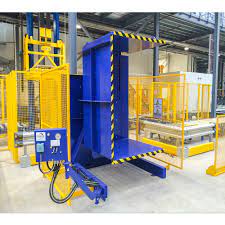
I’ve spent my entire career on factory floors, first as an engineer and later as a factory owner myself. I've seen firsthand how small inefficiencies can add up to huge financial drains. The transition from manual labor to smart automation is one of the most impactful changes a manufacturer can make. A pallet inverter isn't just a piece of equipment; for many businesses in Mexico, it's becoming a cornerstone of modern, competitive manufacturing. Let's break down exactly why this technology is so crucial and how it solves some of the biggest challenges you face every day.
How can pallet inverters directly combat rising operational costs in Mexico?
You see it in your monthly reports. Fluctuating energy prices, rising labor wages, and the constant need for materials are squeezing your margins. Every minute of unproductive manual labor, every box damaged from a clumsy transfer, is a direct hit to your bottom line. It can feel like a constant battle to keep costs under control. But a single, well-placed piece of equipment can provide a powerful and immediate defense against these escalating expenses.
Pallet inverters directly combat rising operational costs by automating the transfer process. This drastically reduces the need for manual labor, minimizes product damage, and accelerates workflows like pallet exchange. The result is lower payroll expenses, fewer write-offs for damaged goods, and higher overall throughput with the same or even fewer staff members.
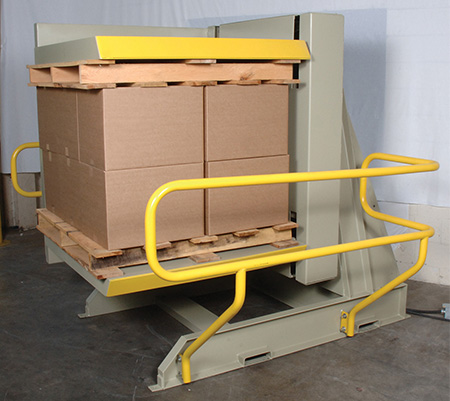
A Deeper Look at Cost Reduction
As an engineer, I always look for the root cause of a problem. High operational costs aren't just one thing; they are the result of many smaller inefficiencies. A pallet inverter tackles several of these at once. Let's analyze the specific ways it saves you money, moving beyond theory to the practical reality of a factory floor in Mexico.
1. Slashing Labor Costs
The most obvious saving is in man-hours. A manual pallet transfer often requires two, sometimes three or four workers. They have to de-stack a pallet, item by item, and re-stack it onto a new one. This is slow, physically demanding, and prone to error. A pallet inverter, operated by a single person, can do the same job in under 60 seconds. The operator simply places the pallet in the machine with a forklift, presses a button, and removes the load on the new pallet. The time saved is enormous. Think about what that means. The rest of the team can be reassigned to value-added tasks, not manual grunt work. This isn't about replacing people; it's about making your people more productive.
2. Preventing Product Damage
Every time a person manually lifts a box, bag, or component, there is a risk of it being dropped, crushed, or improperly stacked. When you're dealing with thousands of units a day, these small damages add up to a significant financial loss. A pallet inverter clamps the entire load securely before rotating it. The pressure is distributed evenly, and the movement is smooth and controlled. This process virtually eliminates handling-related damage. For companies handling fragile goods, electronics, or even heavy but sensitive materials like steel coils, this can translate into saving thousands of dollars each month that were previously written off as "shrinkage" or "damage."
3. Accelerating Your Entire Workflow
Time is money. A bottleneck at the receiving or shipping dock can have a ripple effect, delaying production schedules and shipments. Manual pallet swapping is a classic bottleneck. It's the slowest part of the process. By reducing a 15-minute manual task to a 1-minute automated one, you unlock new levels of speed. Trucks can be loaded or unloaded faster. Raw materials can get to the production line quicker. Finished goods can be prepared for shipment in a fraction of the time. This increased velocity means you can process more orders and move more products without needing a bigger building or more staff.
| Cost Factor | Manual Handling (Team of 2) | Pallet Inverter (1 Operator) | Annual Savings Example (Medium-Sized Plant) |
|---|---|---|---|
| Labor Time per Pallet | 15 - 20 minutes | ~1 minute | $30,000+ USD |
| Risk of Product Damage | High (drops, improper stacking) | Extremely Low (secure clamping) | $15,000+ USD |
| Throughput (Pallets/Hour) | 6 - 8 | 30 - 40 | Increased capacity, hard to quantify but high value |
| Worker Injury Risk | High (back strain, repetitive motion) | Minimal (operator uses forklift/controls) | Reduced insurance claims, improved morale |
What is the real ROI of a pallet inverter when replacing aging manual processes?
Investing in new capital equipment always feels like a big decision, especially when you are focused on financial stability and predictable returns. You look at the price tag and immediately worry if the machine will pay for itself or just become another asset to maintain. This hesitation is normal, but it can keep you stuck with inefficient, aging processes that are quietly costing you a fortune in hidden expenses every single day.
The real Return on Investment (ROI) of a pallet inverter extends far beyond a simple payback period calculation. It is a combination of hard, measurable savings from reduced labor and eliminated product damage, plus significant intangible benefits like improved workplace safety, higher employee morale, and the strategic flexibility to meet diverse customer and logistical requirements.
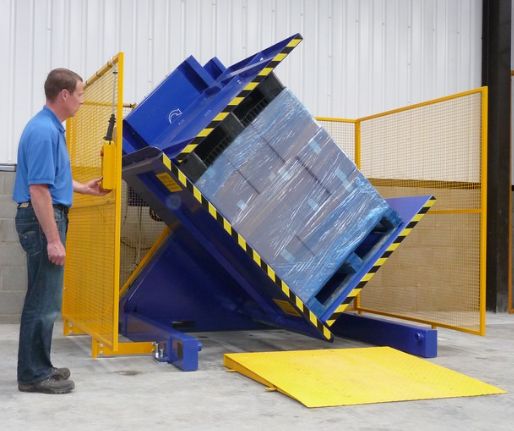
Breaking Down the True Return
As a business owner, I know that every investment must be justified with numbers. Javier Morales, with his background, would demand a rigorous analysis. So, let’s move past the general benefits and look at how to build a concrete business case for a pallet inverter. The ROI is not just one number; it's a story told through direct savings, avoided costs, and new opportunities.
1. Calculating the Tangible ROI
This is the straightforward part. You can calculate the payback period with a simple formula: Payback Period = Initial Investment / Annual Savings.
- Initial Investment: This is the cost of the machine, delivery, and installation.
- Annual Savings: This is where the details matter. You must add up:
- Labor Savings: Calculate the hourly wage (including benefits) of the workers who currently perform manual transfers. Multiply that by the hours per day spent on this task, then by the number of working days per year.
- Damage Reduction Savings: Look at your records. How much money did you lose to damaged goods during handling last year? Even a conservative estimate of an 80-90% reduction in this number is a real saving.
- Pallet Cost Savings: If you are now able to retain your expensive, high-quality in-house pallets and ship on cheap one-way pallets, calculate the cost difference per pallet and multiply it by your annual shipment volume.
2. The High Cost of Doing Nothing
The most common mistake I see is underestimating the cost of maintaining the status quo. Sticking with aging manual processes isn't a zero-cost decision. It has real, negative financial consequences.
- Worker Injury Costs: A single serious back injury can cost tens of thousands of dollars in medical bills, lost time, and potential legal fees. Manual handling is a leading cause of these injuries.
- Lost Productivity: When a worker is injured, their team is less effective. You may need to hire temporary staff. Production slows down. These are real costs.
- Lost Customers: What is the cost of losing a major customer because you couldn't meet their requirement for shipments on plastic pallets? Or because a shipment arrived with damaged goods one too many times? The cost of inaction can be catastrophic.
| ROI Component | Description | Example Calculation |
|---|---|---|
| Initial Investment | Pallet Inverter, Shipping, Installation | -$40,000 USD |
| Annual Labor Savings | 1.5 FTEs x $12,000/year salary/benefits | +$18,000 USD |
| Annual Damage Savings | 0.5% of $5M handled goods value | +$25,000 USD |
| Net Annual Savings | Labor Savings + Damage Savings | +$43,000 USD |
| Simple Payback Period | Investment / Net Annual Savings | ~$0.93 years (or 11 months) |
This simple table shows how quickly the machine can pay for itself based only on the most obvious savings. When you factor in the avoided costs and new opportunities, the ROI becomes even more compelling.
How do pallet inverters improve workplace safety and meet Mexico's compliance standards?
A serious accident on the factory floor is one of a manager's greatest fears. It stops production, hurts team morale, and can lead to inspections, fines, and serious regulatory consequences. Relying on your workforce to manually lift, carry, and re-stack heavy or awkward loads day after day is a constant, ticking safety risk. You are one wrong move away from a costly incident.
Pallet inverters fundamentally improve workplace safety by eliminating the ergonomic risks associated with manual material handling. By automating the heavy lifting, they directly address the root cause of most back injuries and strains. This helps companies in Mexico easily comply with national labor and safety regulations, such as NOM-036-1-STPS-2018, which focuses on preventing musculoskeletal disorders.
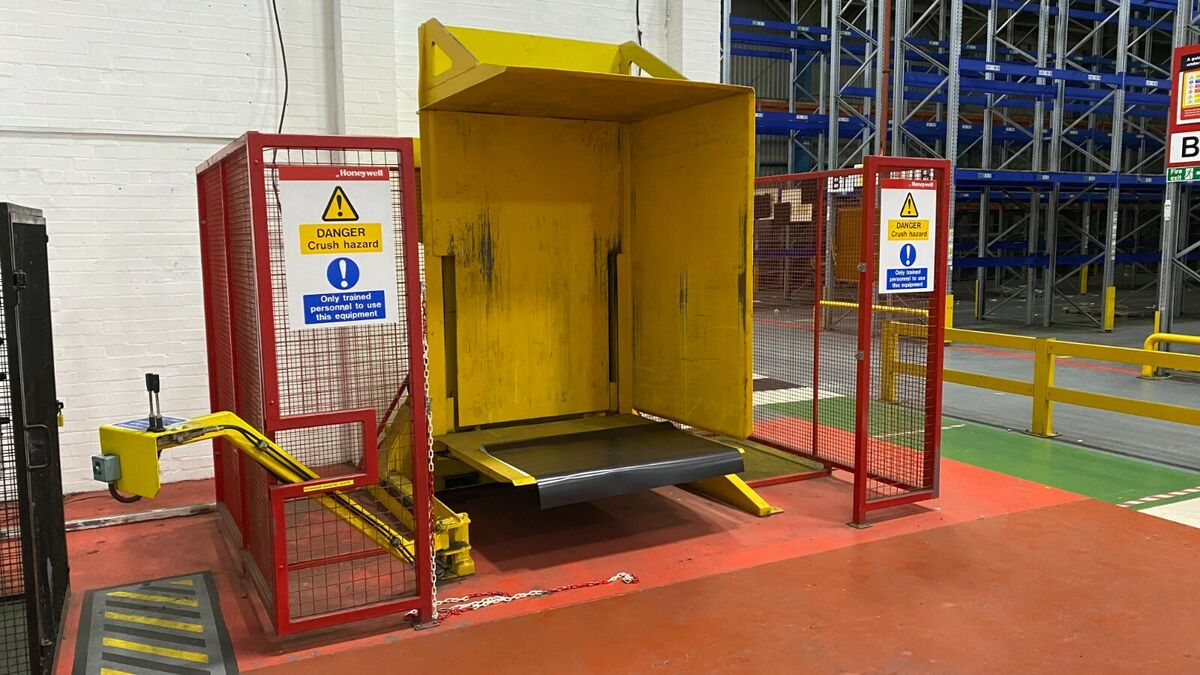
Engineering Safety Into Your Process
When I design equipment, safety isn't an add-on; it's part of the core design. A pallet inverter is a perfect example of engineering a hazard out of the workplace. For a leader like Javier, who is responsible for both the productivity and well-being of his employees, this is a critical point. A safe factory is a productive and stable factory.
1. Eliminating Ergonomic Hazards
The human body is not designed to bend and lift heavy weight repetitively. Manual pallet handling is a textbook example of a high-risk ergonomic task. It involves:
- Awkward Postures: Bending, reaching, and twisting.
- Repetitive Motion: Performing the same lifting action hundreds of times per shift.
- Forceful Exertion: Lifting heavy boxes or bags.
These factors are the primary causes of musculoskeletal disorders (MSDs), like back sprains, shoulder injuries, and carpal tunnel syndrome. A pallet inverter removes the human element from the lifting equation. The machine does the heavy work. The operator's job changes from physical labor to skilled machine supervision, dramatically reducing the risk of MSDs. This is a direct answer to the requirements of standards like Mexico's NOM-036, which mandates that employers identify, analyze, and control ergonomic risk factors.
2. Creating a Controlled, Safe Operating Zone
Manual handling happens in open spaces, where people, forklifts, and materials can interact in unpredictable ways. An accident can happen easily. A pallet inverter, by contrast, creates a clearly defined and protected zone for a potentially dangerous task. Modern machines are equipped with essential safety features:
- Safety Fencing/Guards: Physical barriers prevent anyone from accidentally walking into the machine's operating area.
- Light Curtains: These infrared beams create an invisible safety shield. If a person or object breaks the beam while the machine is active, it stops immediately.
- Dual-Button Controls: Requiring an operator to use both hands to start a cycle ensures their hands are clear of any moving parts.
This turns an unpredictable manual process into a controlled, predictable, and safe automated one.
| Safety Aspect | Manual Pallet Handling | Using a Pallet Inverter | Compliance Impact (e.g., STPS) |
|---|---|---|---|
| Primary Risk | Back and shoulder injuries from lifting | Minimal; operator is not lifting | Directly reduces ergonomic risks cited in NOM-036-1-STPS-2018 |
| Process Control | Unpredictable, dependent on worker care | Highly predictable and controlled sequence | Demonstrates proactive hazard control to auditors |
| Accident Type | Slips, trips, falls, dropped loads | Mechanical failure (rare, preventable with maintenance) | Creates a safer work environment, reducing reportable incidents |
| Worker Fatigue | High physical and mental fatigue | Low; task is supervisory | Leads to a more alert and safer workforce overall |
Can a pallet inverter be more than just a machine, but a key to supply chain optimization?
You view your steel mill not as a collection of individual machines, but as a complete, integrated system. You know that a bottleneck at the very end of the line—in packaging or shipping—can undo all the efficiency gains you made in production. Inefficient pallet management is exactly that kind of bottleneck. It seems like a small problem, but its impact ripples through your entire supply chain, creating delays, frustrating partners, and adding hidden costs.
Yes, a pallet inverter is far more than a standalone machine; it is a strategic tool for supply chain optimization. It acts as a critical bridge, enabling a seamless and low-cost exchange between different pallet systems. This allows a company to use high-quality internal pallets for manufacturing, switch to inexpensive export pallets for shipping, rapidly process incoming goods, and handle returns efficiently, making the entire logistics flow faster, cheaper, and more flexible.
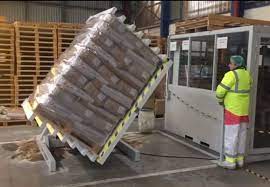
From a Simple Task to a Strategic Advantage
A forward-thinking leader like Javier looks for tools that provide a competitive edge. The pallet inverter is one such tool because it solves several logistical puzzles at once. It unlocks a level of control and flexibility that is impossible to achieve with manual methods. It's about turning a logistical necessity into a source of efficiency and value.
1. Unlocking the Two-Pallet System
This is the most powerful strategic use of a pallet inverter. Many companies in Mexico face a dilemma:
- In-House Pallets: You want to use durable, high-quality plastic or wood pallets within your factory. They last longer, work better with automated systems, and protect your products. But they are expensive, and you don't want them to leave your facility.
- Shipping Pallets: For exporting or sending goods domestically, you want to use the cheapest possible one-way pallets to save on shipping costs and avoid the headache of getting them back.
A pallet inverter is the link that makes this dual-pallet strategy possible. At the shipping dock, you can take a finished load on a $50 in-house pallet and, in one minute, transfer it to a $10 export pallet. The expensive pallet goes back into your system, and the cheap one is sent to the customer. This single capability can save a large manufacturer hundreds of thousands of dollars a year in pallet costs alone.
2. Streamlining Inbound Logistics
The same logic applies to receiving goods. Your suppliers may send you materials on low-quality or damaged pallets. You don't want those "bad" pallets entering your pristine warehouse or automated production area, where they can cause jams or safety issues. With an inverter at the receiving dock, you can immediately transfer incoming materials onto your own standardized, high-quality pallets. This improves internal quality control and operational smoothness from the very first step.
3. Enhancing Customer and Supplier Relationships
In today's market, flexibility is key. Some large customers have very specific packaging requirements, demanding goods arrive on a certain type or size of pallet. Being unable to meet these demands can cost you a contract. A pallet inverter gives you the ability to say "yes" to these requests easily. It also improves your image. When a customer receives a shipment that is neat, secure, and on the right pallet, it reflects well on your entire operation. It shows a level of professionalism and care that builds trust and strengthens business relationships.
| Supply Chain Function | Challenge Without Inverter | Solution With Pallet Inverter | Strategic Benefit |
|---|---|---|---|
| Pallet Management | Losing expensive pallets; high pallet budget | Enables a two-pallet (internal/external) system | Drastic reduction in pallet purchasing costs |
| Inbound Receiving | "Bad" supplier pallets enter facility, causing issues | Immediately transfer goods to high-quality house pallets | Improved internal quality control and warehouse safety |
| Outbound Shipping | Cannot meet specific customer pallet requests | Easily swap loads to any required pallet type | Increased customer satisfaction and market flexibility |
| Damaged Goods/Returns | Difficult and slow to salvage goods from a broken pallet | Quickly and safely transfer the load to a new pallet | Faster product recovery, reduced waste |
My Insights
I remember a client in Monterrey, a steel processor much like Javier. He saw the pallet inverter not as an expense, but as a way to reclaim control over his outbound logistics. He was tired of arguing about pallet quality with his European customers. By installing an inverter, he standardized his export pallets, eliminated a major point of friction, and his team could focus on what they did best: producing high-quality steel products. It's about solving the small problems that cause the biggest headaches and unlocking new levels of efficiency. It's not just about turning a pallet; it's about turning a persistent problem into a competitive opportunity.
Conclusion
Replacing manual handling with pallet inverters is a strategic move for Mexican manufacturers, boosting safety, cutting costs, and creating a more resilient, efficient supply chain for the future.



